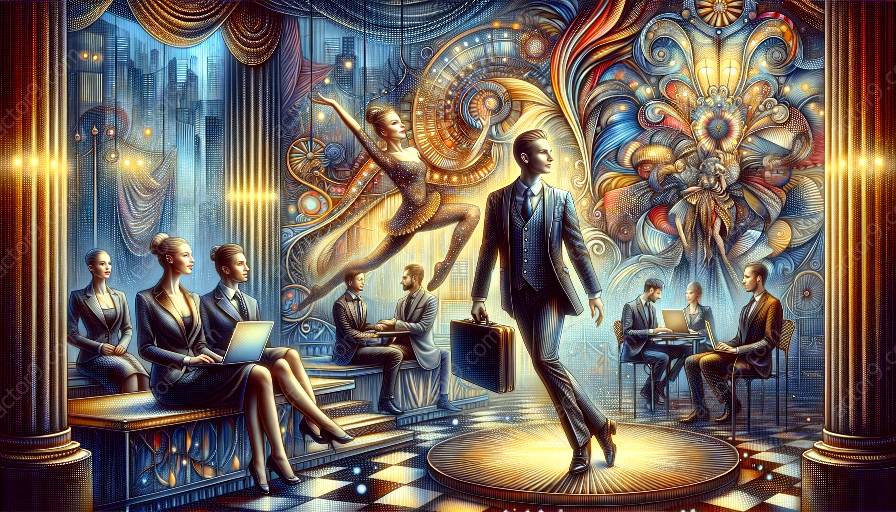Circus arts have a rich and vibrant history, encompassing a broad range of performances that have the power to captivate audiences and leave lasting impressions. Understanding the intricate relationship between consumer behavior and audience engagement in circus arts is crucial for the success and sustainability of circus businesses. In this comprehensive exploration, we will delve into the complexities of this unique industry, examining how management and marketing strategies play a crucial role in captivating and retaining audience interest.
The Evolution of Circus Arts
First, it is essential to understand the evolution of circus arts and how it has transformed into a multifaceted form of entertainment. From its early origins as traveling shows and animal performances to modern iterations featuring acrobatics, aerial acts, and theatrical storytelling, circus arts have adapted to appeal to changing consumer preferences and cultural shifts. The evolution of circus arts highlights the importance of understanding consumer behavior and audience engagement paradigms that align with contemporary tastes and sensibilities.
Consumer Behavior in Circus Arts
Consumer behavior plays a pivotal role in shaping the demand for circus arts performances. Understanding the psychological and sociological factors that drive individuals to attend circus events is essential for crafting compelling and relevant experiences. Consumers may be drawn to circus arts due to a desire for escapism, a fascination with awe-inspiring feats, or a yearning for communal entertainment experiences. By analyzing consumer behavior patterns, circus businesses can tailor their offerings to resonate with their target audiences.
Engaging Audiences Through Immersive Experiences
Creating immersive experiences is a cornerstone of captivating audiences in the world of circus arts. By blending theatricality, technology, and interactive elements, circus businesses can transport audiences into mesmerizing worlds that ignite their senses and emotions. Immersive experiences allow audiences to form deeper connections with the performers and narratives, fostering a sense of engagement that transcends traditional passive spectatorship. Incorporating elements of surprise, novelty, and audience participation can further enhance the immersive appeal of circus arts performances.
The Role of Management and Marketing
In the context of circus arts as a business, effective management and marketing strategies are indispensable for fostering consumer engagement and sustaining audience interest. From talent curation and show production to promotional campaigns and audience outreach, management and marketing efforts are intricately linked to shaping the perception of circus arts and cultivating a loyal fan base. Embracing innovative storytelling techniques, leveraging digital platforms for promotion, and collaborating with influencers can all contribute to enhancing audience engagement and expanding the reach of circus arts.
Building Emotional Connections
An emotional connection between the audience and the circus performance is pivotal for fostering long-lasting engagement. Circus acts that evoke a range of emotions, from excitement and wonder to nostalgia and empathy, can forge enduring connections with audiences. By infusing storytelling elements and evocative narratives into performances, circus businesses can elicit powerful emotional responses from spectators, creating memorable and impactful experiences that resonate with diverse audience segments.
Personalizing the Audience Experience
Personalization is a key driver of audience engagement in circus arts. By segmenting audiences based on preferences, demographics, and behavioral traits, circus businesses can tailor their performances and marketing initiatives to cater to specific audience segments. Utilizing customer data and feedback, personalized experiences can be curated to reflect the unique interests and desires of audience members, fostering a stronger sense of connection and loyalty.
Community Engagement and Social Impact
Circus arts businesses can also leverage community engagement and social impact initiatives to enhance audience engagement. Collaborating with local organizations, supporting charitable causes, and creating educational outreach programs can not only enrich the community but also engender goodwill and support from audiences. By aligning circus arts with social and cultural initiatives, businesses can elevate their appeal and cultivate a positive brand image, ultimately fostering stronger audience engagement.
Conclusion
The intricate interplay between consumer behavior and audience engagement in circus arts represents a dynamic and multifaceted landscape that requires a deep understanding of audience preferences, emotional drivers, and cultural contexts. By leveraging effective management and marketing strategies, circus businesses can create compelling, immersive experiences that resonate with audiences, drive enthusiasm, and pave the way for sustained success in this captivating and transformative industry.


































